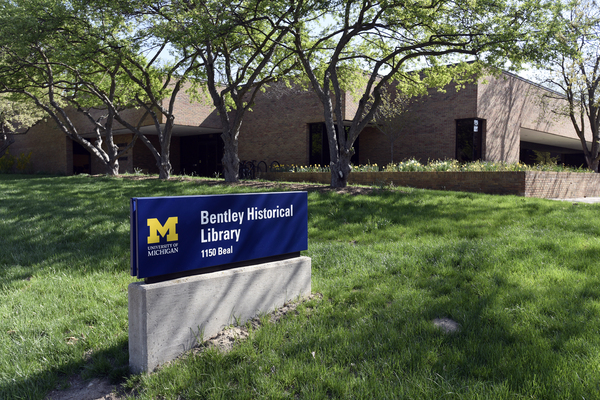Papers, of the Josiah Littlefield family of Monroe County and Farwell, Clare County, Michigan. Correspondence, typescript of autobiography, and excerpted typescript of University of Michigan student diary, 1867-1871, of Josiah Littlefield, surveyor, lumberman, and conservationist; also letters of other members of the Littlefield and Hall families; and photographs.
The Littlefield family collection documents several generations in the life of a family which migrated from Grafton, New York about 1830, and came to Michigan, settling first near Ash in Monroe County and later in Farwell in Clare County. The collection (311 items) spans the period of 1834 to 1935, and consists almost entirely of letters among family members, though there is a small group of printed items dealing with University of Michigan activities and life in Farwell, Michigan. Included with the papers are the correspondence, autobiography, and excerpted diary of Josiah Littlefield. There is also correspondence of Littlefield's wife, Ellen Hart Littlefield, his mother, Mary Hall Littlefield, his daughter, Ellen Littlefield Elder, and his uncle, Edmund Hall.
The correspondence comprising the collection includes several recurring subjects: schooling, medical treatment, social customs, religious matters (selecting ministers, sermons, and church activities), agriculture (types of crops grown and prices received), food prices in Michigan, fashions of domestic furnishings (see Josiah Littlefield folder: September 13, 1874, September 24, 1874, October 4, 1874 and January 1, 1874 from Ellen Hart Littlefield; Mary Hall Littlefield folder: October 14, 1874 from Josiah Littlefield; Ellen Hart Littlefield folder: March 3, 1875 from Lucy Hart and October 5, 1873, letter from Josiah Littlefield; see Ellen Hart Littlefield folder: April 25, 1875 from Jessie Hart Williams).
Interesting though brief descriptions of Oberlin College in the 1830's occur in letters from Edmund Hall (see Martha Smith Hall folder: February 15, 1840 from Edmund Hall; and Mary Hall Littlefield folder: May 21, 1836 and October 11, 1836 from Edmund Hall). Mr. Hall apparently became involved in abolition activities in Michigan in the mid 1840's. A listing of seven speeches scheduled for September or October, 1844 is in the first Edmund Hall folder.
In the area of women's history, parts of the collection cover several topics of interest in addition to those referred to as recurring subjects. Martha Smith Hall, Josiah Littlefield's maternal grandmother left her husband E.F. Hall in New York state about 1830 and migrated to Michigan with her children. She managed to establish a new home and raise and educate her family without any economic help from her husband. (see Martha Hitchcock folder: February 2, 1854 from E.F. Hall, October 12, 1855 from Carolina A. Kinsley; see Edmund Hall folder: August 13, 1855 and August 21, 1855 from Carolina A. Kinsley, October 20, 1855 from Martha Hitchcock, and October 2, 1855 to Mrs. Kinsley from Edmund Hall).
Reference to a case of post-natal depression so severe that it culminated in temporary insanity and the killing of a child occurs in the Josiah Littlefield folder (January 15, 1875 from Ellen Hart Littlefield). Descriptions of another serious post-natal depression are contained in the Josiah Littlefield folder (January 15, 1875 from Ellen hart Littlefield and May 21, 1877 from Margaret Hart).
